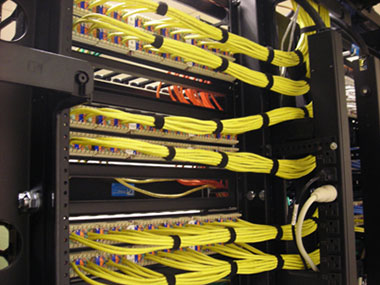Here’s a brief guide on how to use Cat 6 wiring
 ISI Technology provides cat 6 wiring in Denver, Colorado Springs, Fort Collins, Littleton, Boulder, Arvada, and surrounding areas.
ISI Technology provides cat 6 wiring in Denver, Colorado Springs, Fort Collins, Littleton, Boulder, Arvada, and surrounding areas.
- Understand Cat6 Wiring: Cat6 is a type of Ethernet cable used for high-speed networking. It supports Gigabit Ethernet and can handle data transfer speeds of up to 10 Gbps over short distances.
- Gather Materials: You’ll need Cat6 cables, RJ45 connectors, a crimping tool, a cable stripper, and possibly a cable tester.
- Prepare the Cable: Use the cable stripper to remove about 1.5 inches of the outer insulation from the cable. Inside, you’ll find four twisted pairs of wires. Untwist each pair and straighten the wires.
- Arrange the Wires: Arrange the wires according to the T568A or T568B wiring standard. Both are commonly used, but make sure you use the same standard on both ends of the cable for consistency. The order is typically white-orange, orange, white-green, blue, white-blue, green, white-brown, and brown.
- Insert Wires into RJ45 Connector: Slide the wires into the RJ45 connector in the correct order, ensuring they reach the end of the connector. Double-check the wiring sequence before crimping.
- Crimp the Connector: Use the crimping tool to crimp the connector onto the cable. This process secures the wires in place and creates a connection between the cable and the connector. Apply firm pressure to ensure a secure connection.
- Test the Connection: After crimping connectors onto both ends of the cable, use a cable tester to verify the connections. The tester will indicate whether the cable is properly wired and capable of transmitting data.
By following these steps, you can effectively use Cat6 wiring to create Ethernet cables for high-speed networking applications. Remember to use quality materials and adhere to the wiring standards for optimal performance and reliability. Additionally, label your cables to keep track of their purpose and destination, which can be especially helpful in complex network setups. Kindly call us without hesitation.











